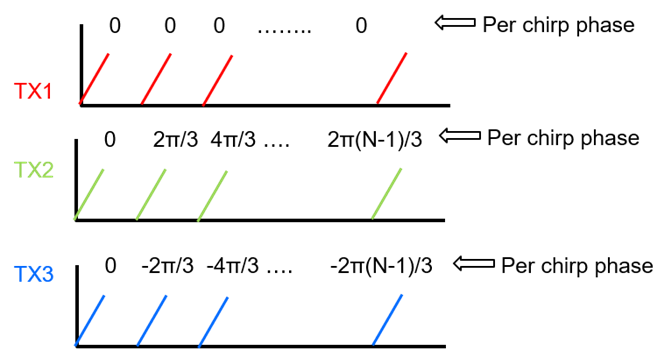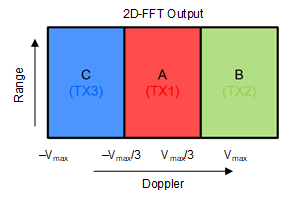ZHCU831 November 2021 AWR2944 , IWR2944
2.4.7 DDMA
Doppler division multiple access (DDMA) is a MIMO scheme that allows simultaneous transmission of all TX channels. This allows an increase in the transmit power and hence higher SNR. In DDMA, the orthogonality between different TX channels is obtained by coding each TX with a unique cyclic phase sequence using the phase shifters. Figure 2-6 illustrates the working of DDMA modulation. In time domain, a unique phase shift is applied to each TX channel. This phase value is constant per-chirp and increases as the chirp index increases. If there are transmitters, each transmitter is modulated with phase , is the chirp index. The example in Figure 2-6 has = 3. The orthogonality happens in the Doppler frequency domain as shown in Figure 2-7. Therefore, after Doppler FFT, the signals from different TX channels are naturally separated. However, due to Doppler frequency multiplexing, the allowed maximum target velocity is reduced by a factor of , similar to time division Multiplexing (TDM) MIMO. It is possible to recover the maximum velocity using hypothesis testing with zero padding or phase dithering.

Figure 2-6 DDMA Modulation nonEmpty
 Figure 2-7 Doppler Spectrum in DDMA
Figure 2-7 Doppler Spectrum in DDMA